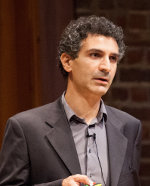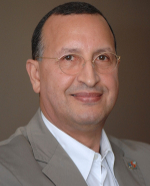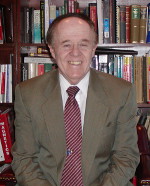IEEE IoT Newsletter - September 2020
Air Particle Matter Pollution Assessment: Applying IoT and DLT Technologies to High Volume Air Samplers
Diego Suárez-Bagnasco
Aerosols are fine solid particles (particulate matter, PM) or liquid droplets in gas (usually air), whose origin can be natural or anthropogenic. Air PM pollution exposure is linked to diverse human health problems and also to many environmental effects. People living in urban environments are potentially more exposed to polluted air.
Blockchain-enabled Edge Analytics for a Mobile Universal Biotesting Station
Sergii Kushch, Martin Hayes and Eoin O’Connell
The impact of COVID-19 on manufacturing, educational, and a varied assortment of locations has been immense. The use case described below proposes a Blockchain-enabled infrastructure for deployment on an edge gateway to secure a universal biotesting station that is capable of processing sensitive personal biodata at scale. The unit can be deployed for access to a health center, manufacturing facility, or a Higher Education laboratory facility.
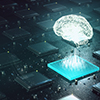 Adoption of Real-Time Machine Learning for Cyber Risk Assessment in IoT Environments
Adoption of Real-Time Machine Learning for Cyber Risk Assessment in IoT Environments
Mohamed Rahouti and Moussa Ayyash
The Internet of Things (IoT) has emerged in the past as Internet extension and significantly changed our world. A tremendous amount of IoT applications has highly eased people’s daily lives and improved resource usage and allocation, e.g., power bank sharing, bike sharing, etc. However, the ingrained openness of underlying wireless systems renders these IoT entities vulnerable to a broad range of cyber risks, e.g., vulnerabilities of spectrum that can be a source of adversarial inference.
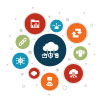 New Generation Alternative Sensors for IoT
New Generation Alternative Sensors for IoT
Euclides Lourenço Chuma
The Internet of things (IoT) is a system of interrelated computing devices and mechanical and digital machines provided with unique identifiers (UIDs) and the ability to transfer data over a network without requiring human-to-human or human-to-computer interaction. Many types of sensors are used in IoT for various applications, such as measuring temperature, humidity, pressure, acceleration, proximity, etc. However, a new generation of alternative sensors is being developed, which can be connected to IoT so that they are used in the creation of autonomous vehicles, in health monitoring, and other research areas.
EVENTS & ANNOUNCEMENTS
IEEE Internet of Things Initiative - Upcoming Events
IEEE 6th World Forum on Internet of Things - 2020
Join us virtually for upcoming events:
IoT Vertical and Topical Week: 14-18 September
Women in Engineering Panel: 23 September
IEEE Internet of Things Magazine
 The Internet of Things Magazine (IoTM) publishes high-quality articles on IoT technology and end-to-end IoT solutions. IoTM articles are written by and for practitioners and researchers interested in practice and applications, and selected to represent the depth and breadth of the state of the art. The technical focus of IoTM is the multi-disciplinary, systems nature of IoT solutions.
The Internet of Things Magazine (IoTM) publishes high-quality articles on IoT technology and end-to-end IoT solutions. IoTM articles are written by and for practitioners and researchers interested in practice and applications, and selected to represent the depth and breadth of the state of the art. The technical focus of IoTM is the multi-disciplinary, systems nature of IoT solutions.
Become an author - Submit an article today!
Never miss a copy - Subscribe today!
IEEE Xplore®
Stay Connected to IEEE Xplore When Working Remotely
If your organization has an institutional subscription to IEEE Xplore® and you need to work remotely due to school and workplace closures, you can still access IEEE Xplore and continue your work and research while offsite. Try these tips for remote access or contact IEEE for help. IEEE is here to support you, making certain that your IEEE subscription continues to be accessible to all users so they can continue to work regardless of location.
This Month's Contributors
Diego Suárez Bagnasco Received is BSc. Electronic Eng. in 2002 (Catholic University of Uruguay), PgD Marketing in 2006 (Catholic University of Uruguay), MSc. Biomedical Eng. in 2010 (Favaloro University, Argentina), Ph.D. Biophysical Sciences in 2017 (PEDECIBA, Univ. de la República, Uruguay).
Read More >>
Sergii Kushch holds a Ph.D. in Computer Science and a Master degree in Radio Engineering (Hons.) and is a Senior Member of the IEEE.
Read More >>
Eoin O’Connell is a Funded Investigator in the Irish national research centre CONFIRM.
Read More >>
Martin Hayes is Head of the Electronic & Computer Engineering Department (ECE) at the University of Limerick and is a funded investigator with CONFIRM, the SFI funded institute for Smart Manufacturing Research in Ireland.
Read More >>
Mohamed Rahouti received the M.S. degree and Ph.D. degree from the University of South Florida in the Mathematics Department and Electrical Engineering Department, Tampa, FL, USA, in 2016 and 2020, respectively.
Read More >>
Moussa Ayyash (M'98–SM'12) received his B.S., M.S., and Ph.D. degrees in Electrical and Computer Engineering.
Read More >>
Euclides Lourenço Chuma earned a degree in Mathematics (2003) from the University of Campinas (UNICAMP), a graduate degree in network and telecommunications Systems (2015) at INATEL, and MSc in electrical engineering (2017) at UNICAMP, and a PhD in electrical engineering (2019) at UNICAMP, SP-Brazil.
Read More >>
Contributions Welcomed
Click Here for Author's Guidelines >>
Would you like more information? Have any questions? Please contact:
Raffaele Giaffreda, Editor-in-Chief
rgiaffreda@fbk.eu
Massimo Vecchio, Managing Editor
massimo.vecchio@uniecampus.it
About the IoT eNewsletter
The IEEE Internet of Things (IoT) eNewsletter is a bi-monthly online publication that features practical and timely technical information and forward-looking commentary on IoT developments and deployments around the world. Designed to bring clarity to global IoT-related activities and developments and foster greater understanding and collaboration between diverse stakeholders, the IEEE IoT eNewsletter provides a broad view by bringing together diverse experts, thought leaders, and decision-makers to exchange information and discuss IoT-related issues.
IEEE IoT Newsletter Editorial Board
Sign Up for IoT Technical Community Updates
Calendar of Events
IEEE 8th World Forum on Internet of Things (WF-IoT) 2022
26 October-11 November 2022
Call for Papers
IEEE Internet of Things Journal
Special issue on Towards Intelligence for Space-Air-Ground Integrated Internet of Things
Submission Deadline: 1 November 2022
Special issue on Smart Blockchain for IoT Trust, Security and Privacy
Submission Deadline: 15 November 2022
Past Issues
September 2022
July 2022
March 2022
January 2022
November 2021
September 2021
July 2021
May 2021
March 2021
January 2021
November 2020
July 2020
May 2020
March 2020
January 2020
November 2019
September 2019
July 2019
May 2019
March 2019
January 2019
November 2018
September 2018
July 2018
May 2018
March 2018
January 2018
November 2017
September 2017
July 2017
May 2017
March 2017
January 2017
November 2016
September 2016
July 2016
May 2016
March 2016
January 2016
November 2015
September 2015
July 2015
May 2015
March 2015
January 2015
November 2014
September 2014



